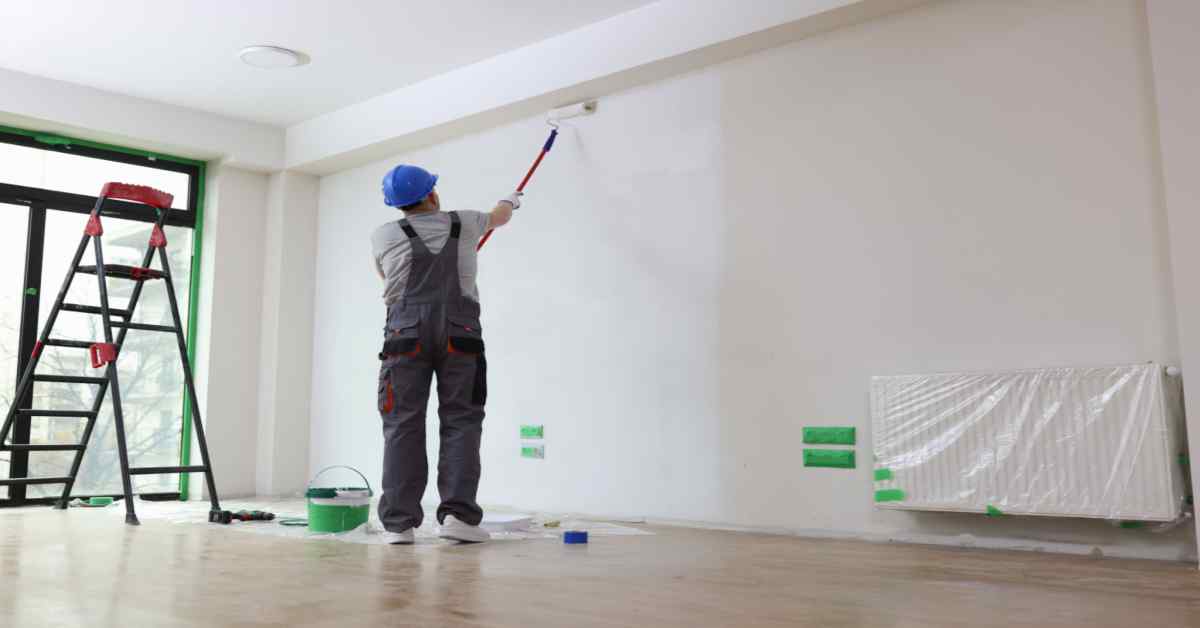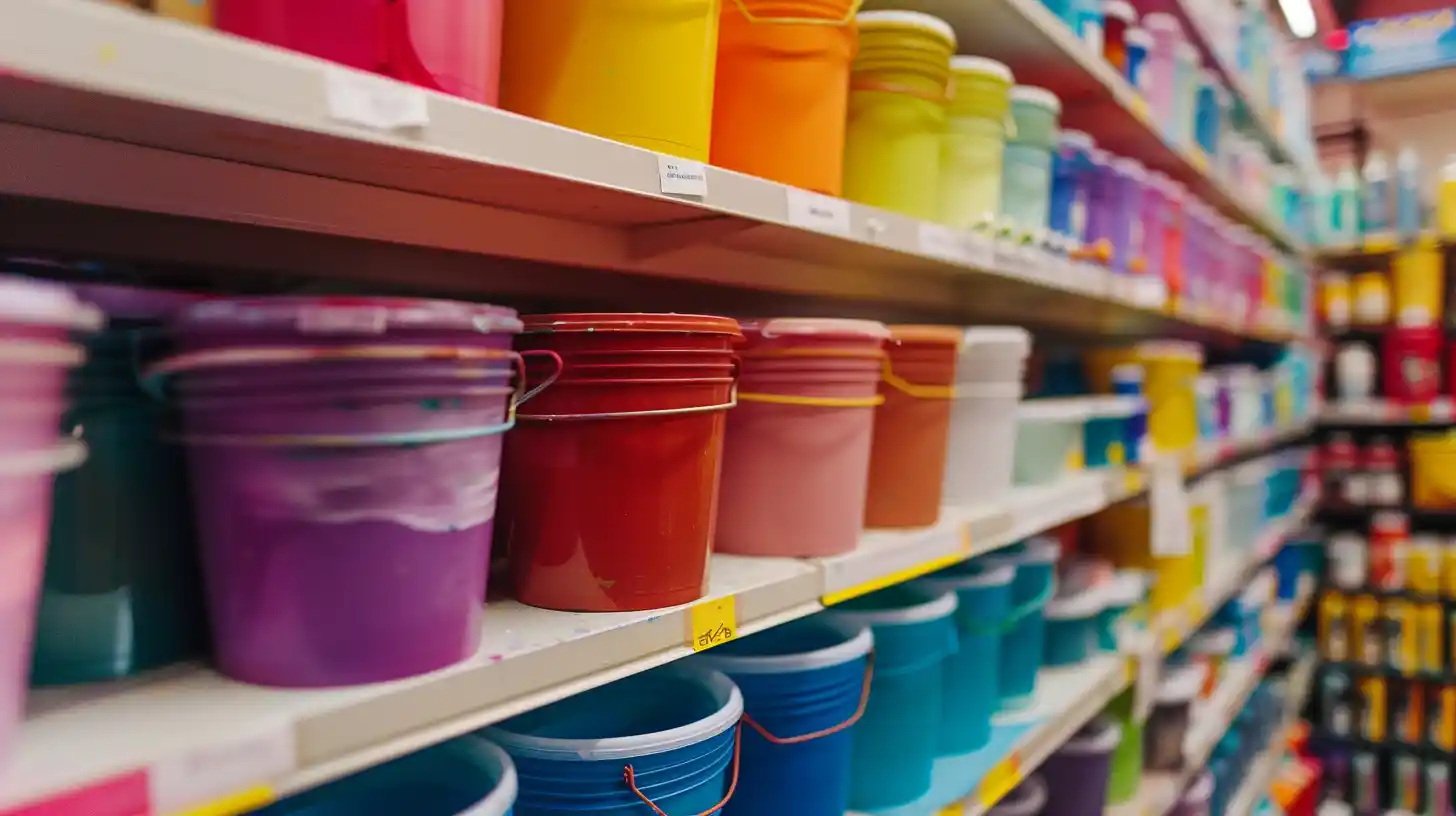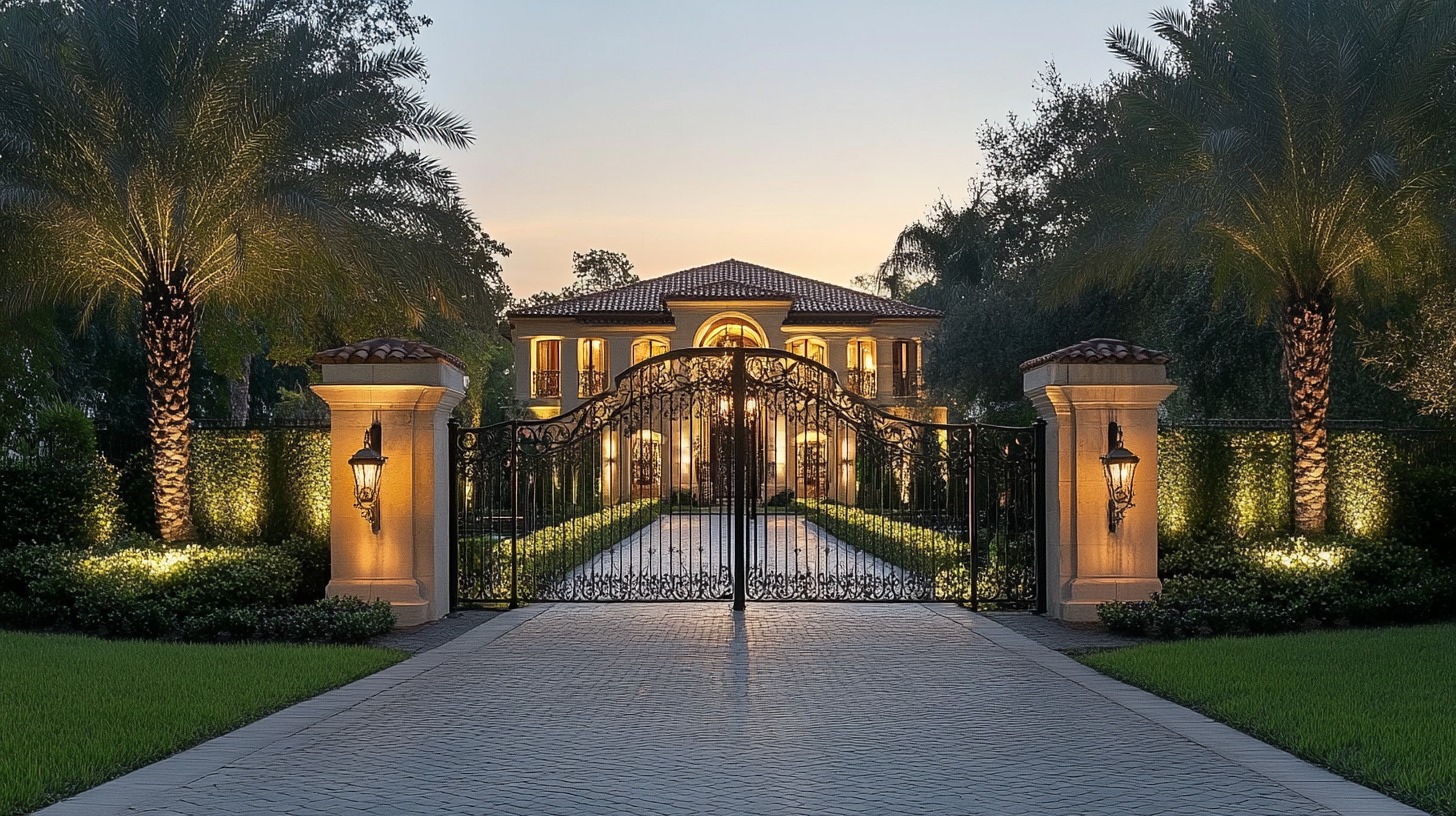Table of Contents
Quality Service Guarantee Or Painting Free

Get a rental agreement with doorstep delivery

Find the BEST deals and get unbelievable DISCOUNTS directly from builders!

5-Star rated painters, premium paints and services at the BEST PRICES!
Loved what you read? Share it with others!


Submit the Form to Unlock the Best Deals Today
Help us assist you better
Check Your Eligibility Instantly

Experience The NoBrokerHood Difference!
Set up a demo for the entire community
Anti-Bacterial Paint: How it Works and Why you Need it
Table of Contents
Every day, you come into contact with numerous surfaces, from door handles and kitchen counters to hospital walls and playground equipment. These surfaces, often unnoticed, can be a breeding ground for bacteria. These tiny organisms, while usually harmless, can sometimes pose serious health threats, particularly in sensitive areas like hospitals, schools, and food preparation areas. One potential solution for this is anti-bacterial paint.
This innovative paint promises to do more than just improve appearances. It actively contributes to a cleaner and healthier environment. But what is anti-bacterial paint exactly, and how does it function? Does it truly live up to its claims? Read this article to get answers to these questions.
What is Anti-Bacterial Paint?
Antibacterial paint, often called antimicrobial paint, is a special paint with a specific component in its formulation. This component effectively stops the growth of bacteria and fungi on painted surfaces.
Quality Service Guarantee Or Painting Free

Get a rental agreement with doorstep delivery

Find the BEST deals and get unbelievable DISCOUNTS directly from builders!

5-Star rated painters, premium paints and services at the BEST PRICES!
These paints are engineered to offer a high level of protection for your walls against the proliferation of bacteria and fungi. Anti-bacterial paint for walls is widely available in the market and is very cost-effective due to its protective features and extended lifespan.
How Does Anti-Bacterial Paint Work?
Anti-bacterial paint functions by inhibiting the activity of microbes on the surfaces it is applied to. These paints incorporate substances known as antimicrobial additives. These additives render the paint naturally resistant to any germ accumulations.
By inhibiting microbial activity on wall surfaces, these antibacterial paints safeguard your family from pathogens that can cause infections.
What are the Benefits of Using Anti-Bacterial Paint Work?
Anti-bacterial paint offers several benefits, particularly in environments with paramount cleanliness and hygiene. Some of the benefits of its anti-bacterial are:
1. Improved Hygiene
Anti-bacterial paint contains active ingredients that can kill or inhibit the growth of bacteria on the painted surfaces. This is particularly beneficial in environments such as hospitals, schools, and kitchens where bacterial contamination can pose serious health risks. By reducing the presence of bacteria, anti-bacterial paint helps to maintain a cleaner and more hygienic environment.
2. Long-Lasting Protection
Unlike some cleaning products, the antibacterial properties of this type of paint are not temporary. They are integrated into the paint itself and offer long-term protection against bacteria. This means that even as the paint ages, it continues to resist bacterial growth, ensuring that surfaces remain clean and safe for extended periods.
3. Prevention of Foul Odours
Bacteria can often cause unpleasant odours, particularly in damp areas or with poor ventilation. Anti-bacterial paint helps to prevent these odours by inhibiting bacterial growth. This can be particularly beneficial in areas such as bathrooms and kitchens, helping to keep these spaces fresh and pleasant.
4. Versatility
Anti-bacterial paint is not limited to use in one specific type of environment. It can be used in various settings, from homes and offices to hospitals and schools. This makes it a versatile solution for maintaining hygiene in different environments. Furthermore, it comes in various colours and finishes, making it easy to incorporate into any design scheme.
5. Cost-effective
While the initial cost of anti-bacterial paint may be higher than regular paint, the long-term benefits can make it a cost-effective choice. The reduction in bacterial growth can lead to lower cleaning and maintenance costs. Additionally, the long-lasting nature of the paint means that it does not need to be reapplied as frequently as regular paint, leading to savings in the long run.
Which are the Places Where you Should Apply Anti-Bacterial Paint?
Applying anti-bacterial paint can be beneficial in various environments. Some places where you should consider applying anti-bacterial paint are:
1. Hospitals and Healthcare Facilities
Hospitals and healthcare facilities are places where people with various diseases and infections come for treatment. These places need to be kept as sterile as possible to prevent the spread of diseases. Anti-bacterial paint on the walls, floors, and ceilings can help reduce the bacterial load. This can be particularly beneficial in operation theatres, ICUs, and patient rooms.
2. Schools and Childcare Centers
Children, especially younger ones, tend to touch surfaces and put their hands in their mouths, making them more susceptible to infections. Schools and childcare centres are places where children spend significant time. Using anti-bacterial paint in these facilities can help reduce the risk of bacterial infections among children. This paint can be particularly useful in classrooms, play areas, and restrooms.
3. Kitchens and Bathrooms
Kitchens and bathrooms are areas that are often exposed to moisture and humidity, conditions that are ideal for bacterial growth. In kitchens, the risk is even higher due to food particles. Bathrooms, with their constant exposure to water, can also harbour bacteria. Using anti-bacterial paint in these areas can help maintain hygiene and prevent the spread of bacteria.
4. Fitness Centers and Gyms
Fitness centres and gyms are places where people sweat, a bodily fluid that can promote the growth of bacteria. Moreover, many people often share gym equipment, increasing the risk of bacterial transmission. Using anti-bacterial paint in these facilities can help maintain cleanliness and prevent infection spread
How You Should Maintain Anti-Bacterial Paint?
Maintaining anti-bacterial paint is important to ensure its longevity and effectiveness. Proper care can help preserve the paint’s antibacterial properties and keep your walls looking fresh and clean. Some of the considerations are:
1. Regular Cleaning
Anti-bacterial paint works by inhibiting the growth of bacteria on the painted surface. However, dust and dirt can accumulate over time, potentially providing a medium for bacteria to grow. Therefore, regular cleaning is essential. Use a soft, damp cloth to wipe the surfaces gently. This will remove any dust or dirt that has settled on the paint.
Avoid harsh chemicals or abrasive cleaning tools, as they can damage the paint and reduce effectiveness. Instead, opt for mild soaps or detergents safe for painted surfaces. Drying the surface after cleaning is important to prevent moisture build-up, which could also affect the paint’s antibacterial properties.
2. Immediate Stain Removal
Stains can be a common issue, especially in high-traffic areas. If stains occur, it’s best to remove them immediately. The longer a stain sits, the harder it becomes to remove, leading to permanent discolouration.
Use a mild detergent mixed with warm water to clean the stain. Gently blot the stain with a clean cloth until it’s gone. Avoid scrubbing, as it can damage the paint. Also, remember to dry the area thoroughly after cleaning to prevent moisture from seeping into the paint.
3. Avoid Direct Sunlight
Anti-bacterial paint, like any other paint, can fade when exposed to direct sunlight for prolonged periods. This affects the aesthetic appeal and can reduce the paint’s antibacterial properties. Use window coverings like blinds or curtains during peak sunlight hours to protect the painted surfaces if possible.
Alternatively, consider using UV-protective window films or shades to block out harmful UV rays that can cause the paint to fade.
4. Regular Inspection
Over time, painted surfaces can show signs of wear and tear. Regular inspection can help identify these issues early. Look for signs like chipping, peeling, or fading. If you notice any such signs, it may be time to apply a fresh coat of paint.
Remember, a well-maintained surface can enhance the longevity of the anti-bacterial paint. Also, keep an eye out for mould or mildew growth, as these could indicate a problem with moisture or ventilation that needs to be addressed.
5. Proper Ventilation
Maintaining proper ventilation is crucial for the longevity of anti-bacterial paint. Moisture can degrade the paint’s antibacterial properties and cause it to peel or chip. Ensure that rooms with anti-bacterial paint, especially bathrooms and kitchens, are well-ventilated.
Using exhaust fans or opening windows can help reduce moisture and keep your paint in good condition. Remember, a dry and well-ventilated environment can significantly enhance the lifespan of your anti-bacterial paint.
How to Choose the Right Anti-Bacterial Paint?
Choosing the best antifungal and antibacterial paint can be difficult without understanding the factors affecting it. Some of the factors you should consider are:
1. Anti-bacterial Properties
Anti-bacterial paint is designed to inhibit the growth of bacteria on painted surfaces. When selecting an anti-bacterial paint, it’s important to look for products that have undergone rigorous testing against various bacteria.
The percentage of bacteria it can handle can determine the effectiveness of the paint. Some paints may also have certifications from health or quality assurance organisations, which can provide additional assurance of their antibacterial properties.
2. Durability
Durability is a key factor in the longevity and effectiveness of anti-bacterial paint. The paint should withstand regular cleaning, scrubbing, and exposure to various environmental conditions without losing its antibacterial properties.
This is particularly important in high-traffic areas or places with high exposure to bacteria, such as bathrooms and kitchens. The durability of the paint can often be determined by its warranty period and the manufacturer’s guidelines on maintenance and cleaning.
3. Safety
Safety is paramount when choosing any type of paint, including anti-bacterial paint. The paint should be non-toxic and safe for both humans and pets. It should not emit harmful fumes or chemicals that can cause health issues such as allergies, respiratory problems, or skin irritation.
The safety of the paint can usually be determined by checking its Material Safety Data Sheet (MSDS), which provides information on the paint’s composition, potential hazards, and safety precautions.
4. Coverage
Coverage refers to the area a certain quantity of paint can cover, usually measured in square feet per gallon. A paint with high coverage is more cost-effective as it requires less paint to cover the same area.
When considering coverage, it’s also important to consider the number of coats needed for adequate anti-bacterial protection. Some paints may require multiple coats, which can affect the overall cost and time required for painting.
5. Brand Reputation
The brand's reputation can often be a good indicator of the quality and reliability of its products. Brands with a good track record will likely produce high-quality paints that deliver on their promises.
You should also check the brand's reputation by reading reviews and ratings online, asking for recommendations from professionals or friends, or checking if the brand has received any awards or recognitions for its products. The anti-bacterial paint price varies with different brands.
How can NoBroker Help?
If you are facing difficulties with anti-bacterial paint, consider seeking professional assistance from NoBroker. NoBroker provides a wide array of painting services, including applying anti-bacterial paint. Our team consists of skilled and experienced painters who guarantee impeccable results and a smooth painting process. They utilise high-quality, specialised, and safe chemicals.
NoBroker's painting services aim to enhance your living space with skill and elegance. We offer various services such as interior painting, exterior painting, wall texture painting, waterproofing solutions, wood painting, and metal painting. Our team of professional painters proficient in all home painting aspects carries out each service.
In addition to offering excellent painting services, we guarantee a hassle-free and superior result. We value your time, and that's why they work with maximum efficiency to complete the project within the specified timelines without compromising on the quality of work. So, if you plan to give your home a fresh and appealing makeover, NoBroker's painting services are a great choice.
Frequently Asked Questions
Anti-bacterial paint is a type of paint formulated with additives that inhibit the growth of bacteria on painted surfaces. It helps maintain a cleaner environment by reducing the presence of harmful bacteria.
Anti-bacterial paint works by releasing active agents that disrupt the metabolic processes of bacteria, preventing their growth and reproduction on the painted surface.
The benefits of using anti-bacterial paint include reducing the spread of infectious diseases, maintaining cleaner surfaces for extended periods, and improving hygiene in environments such as hospitals, kitchens, and bathrooms.
Yes, anti-bacterial paint is generally safe for use in homes and businesses. However, following manufacturer instructions for application and ventilation is essential to ensure proper usage.
Anti-bacterial paint suits most surfaces, including walls, ceilings, wood, and metal. However, checking the product specifications and recommendations for compatibility with specific surfaces is essential.
Recommended Reading

Best Washable Wall Paint for Long-Lasting Durability and Easy Cleaning in 2025
January 31, 2025
4213+ views

How to Paint a Wall in 12 Easy Steps
January 31, 2025
2626+ views

VOC Paint: Navigating Through Benefits, Risks & Solutions
January 31, 2025
2748+ views

Best 10 Diwali Painting Ideas for 2025
January 31, 2025
3231+ views

Stunning Staircase Wall Paint Ideas: Elevate Your Home's Aesthetic with
January 31, 2025
2159+ views
Loved what you read? Share it with others!
NoBroker Painting Testimonials
Before this festive season
get your house painted
Most Viewed Articles

40+ Best Stunning Two Colour Combinations for Bedroom Walls to Elevate Your Space in 2025
January 31, 2025
309638+ views

Top 25 Outside Color Combinations with Colour Codes for a Stylish Home in 2025
January 31, 2025
128122+ views

Asian Paint Price 20 Litre: Complete Guide to Different Variants and Costs in 2025
January 31, 2025
58359+ views

24 Latest Main Gate Colour Combinations for a Modern Look in 2025
December 28, 2024
46130+ views

Top Asian Paints Colour Codes: Transform Your Home with Latest Colours 2025
December 17, 2024
40528+ views
Painting Services in Top Cities of India
Top Paint Brands in India
| Asian Paints | Nerolac Paints |
| Berger Paints | Indigo Paints |
| Dulux Paints | Nippon Paints |
| Shalimar Paints |
Top Paint Brands Price in India
| Asian Paints Price | Nerolac Paints Price |
| Berger Paints Price | Dulux Paints Price |
| Nippon Paints Price | Shalimar Paints Price |
| Indigo Paints Price |
Recent blogs in
36 Creative Door Colour Combination Ideas for Your Stylish Home Entrances in 2025
January 31, 2025 by Priyanka Saha
Best Furniture Polish for Antiques and Wooden Surfaces
January 31, 2025 by NoBroker.com
5 Vastu Colours and Where They Should Be Used
January 31, 2025 by NoBroker.com
Best Colours for Small Rooms: Ultimate Paint Guide
January 31, 2025 by NoBroker.com
The Pantone Colour of the Year and How to use it
January 31, 2025 by NoBroker.com





Join the conversation!